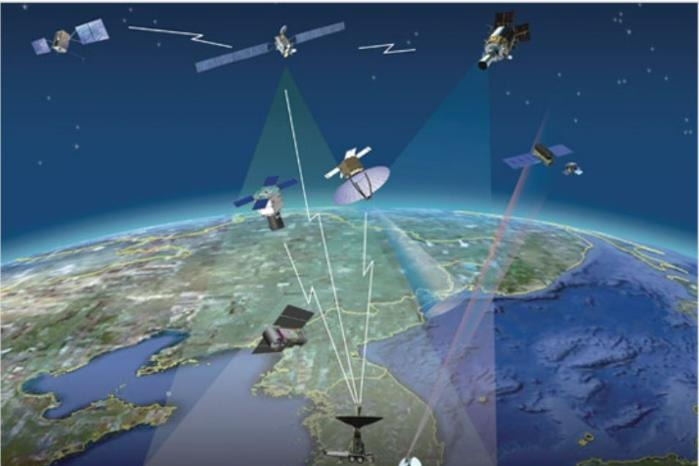S.Korea to raise R&D's share of defense budget to 10%
A proposed reconnaissance and interception system will also respond to N.Korea's weapons threats from space
By Apr 20, 2023 (Gmt+09:00)
LG Chem to sell water filter business to Glenwood PE for $692 million


KT&G eyes overseas M&A after rejecting activist fund's offer


Mirae Asset to be named Korea Post’s core real estate fund operator


StockX in merger talks with Naver’s online reseller Kream


Meritz backs half of ex-manager’s $210 mn hedge fund



South Korea will develop a reconnaissance and interception system to respond to North Korea's nuclear weapons and missile threats from space by raising military R&D's share of the national defense budget to the 10% level within five years.
The Presidential Advisory Council on Science & Technology, the country's highest decision-making body for science and technology chaired by the president, on Wednesday announced this as part of a 2023-37 basic plan for innovation of national defense and science and technology. The body deliberates mid- to long-term policies in the field and strategies for securing technology.
The government will devise plans for defense R&D based on the council's plan.
The council laid out goals for strategic defense technology to build a foundation for cutting-edge science and technology, with the top priority being the development of advanced weapons systems to counter North Korea's nuclear weapons and missiles. In addition, it will secure space-based surveillance and reconnaissance technology such as military reconnaissance satellites.
In November, the Ministry of National Defense will launch into orbit a reconnaissance satellite with synthetic aperture radar and electro-optical sensors and upgrade the device to monitor the Korean Peninsula. Another project is a response system for weapons of mass destruction focusing on high-powered precision strikes and missile defense.
The ministry will also pursue development of medium- and long-range surface-to-air missiles capable of intercepting North Korean ballistic missiles and a "Korean iron dome" to neutralize long-range artillery.
Another highlight is an artificial intelligence (AI) integrated command system to analyze changes on the battlefield in real time under the goal of finding and analyzing changes in the war situation based on related data and AI and even issue commands.
Development of combat robots deployable to the battlefield is also part of the plan.
"We will seek various means to promote advancement of military power," a council source said.
Write to Jin-Won Kim at jin1@hankyung.com
-

-
 Aerospace & DefenseChairman of Polish defense company PGZ visits S.Korea
Aerospace & DefenseChairman of Polish defense company PGZ visits S.KoreaApr 17, 2023 (Gmt+09:00)
1 Min read -
 Aerospace & DefenseLIG Nex1, S.Korea's Air Force Academy sign future defense tech deal
Aerospace & DefenseLIG Nex1, S.Korea's Air Force Academy sign future defense tech dealMar 31, 2023 (Gmt+09:00)
1 Min read -
 Aerospace & DefenseHyundai E&C, KAI to develop export-type package for defense industry
Aerospace & DefenseHyundai E&C, KAI to develop export-type package for defense industryMar 28, 2023 (Gmt+09:00)
1 Min read -
 Aerospace & DefenseS.Korea to benefit from rising global defense spending
Aerospace & DefenseS.Korea to benefit from rising global defense spendingMar 24, 2023 (Gmt+09:00)
3 Min read -
 Aerospace & DefenseHanwha Aerospace joins Romania's defense modernization efforts
Aerospace & DefenseHanwha Aerospace joins Romania's defense modernization effortsFeb 07, 2023 (Gmt+09:00)
1 Min read -
 Aerospace & DefenseHyundai Doosan Infracore bags $256 mn Turkey defense deal
Aerospace & DefenseHyundai Doosan Infracore bags $256 mn Turkey defense dealFeb 03, 2023 (Gmt+09:00)
1 Min read -
 Aerospace & DefenseK-defense sector to reach annual export of $16 bn for two consecutive years
Aerospace & DefenseK-defense sector to reach annual export of $16 bn for two consecutive yearsJan 04, 2023 (Gmt+09:00)
2 Min read -
 Aerospace & DefenseLIG Nex1 signs contract for next-gen military radio system
Aerospace & DefenseLIG Nex1 signs contract for next-gen military radio systemDec 29, 2022 (Gmt+09:00)
1 Min read


